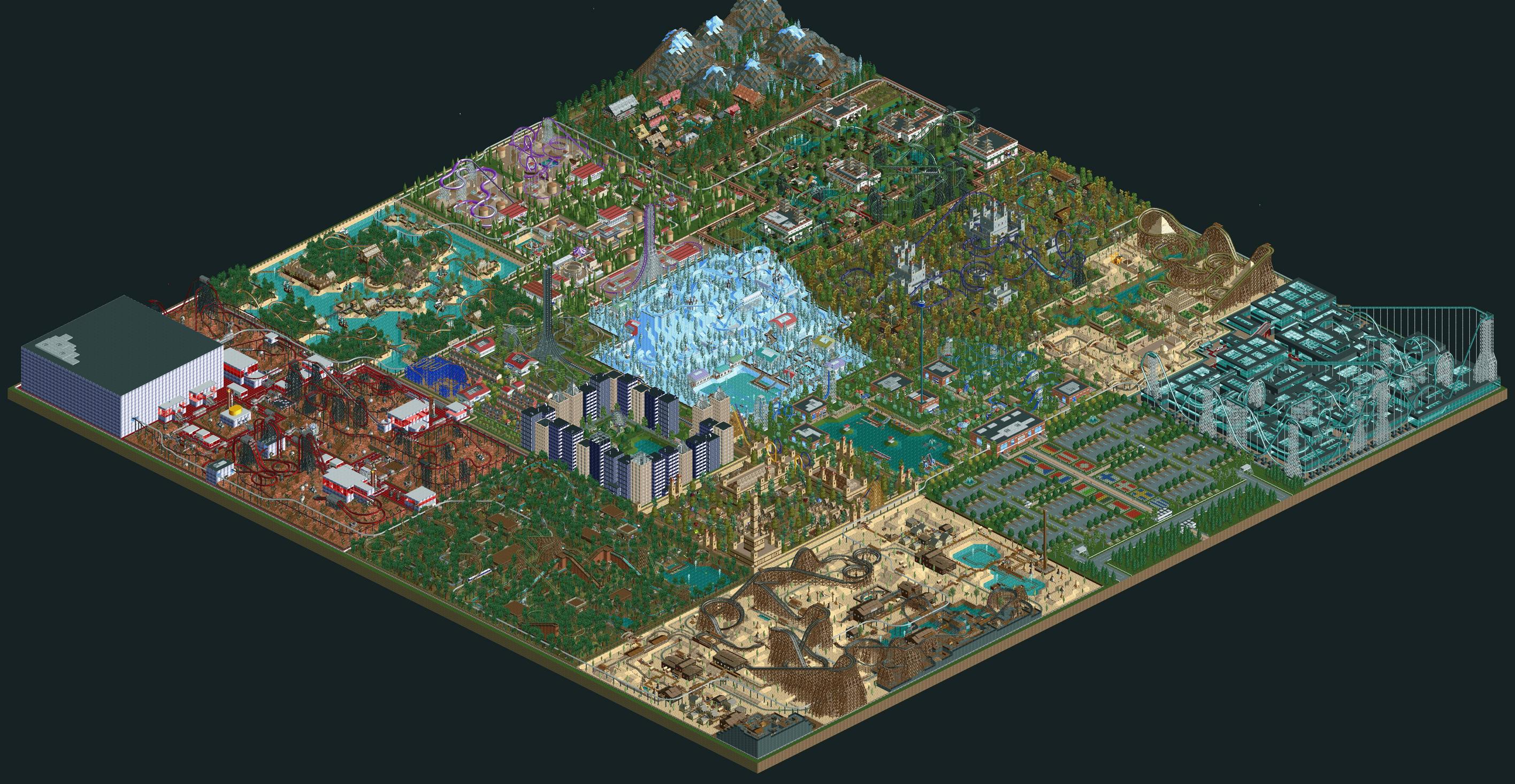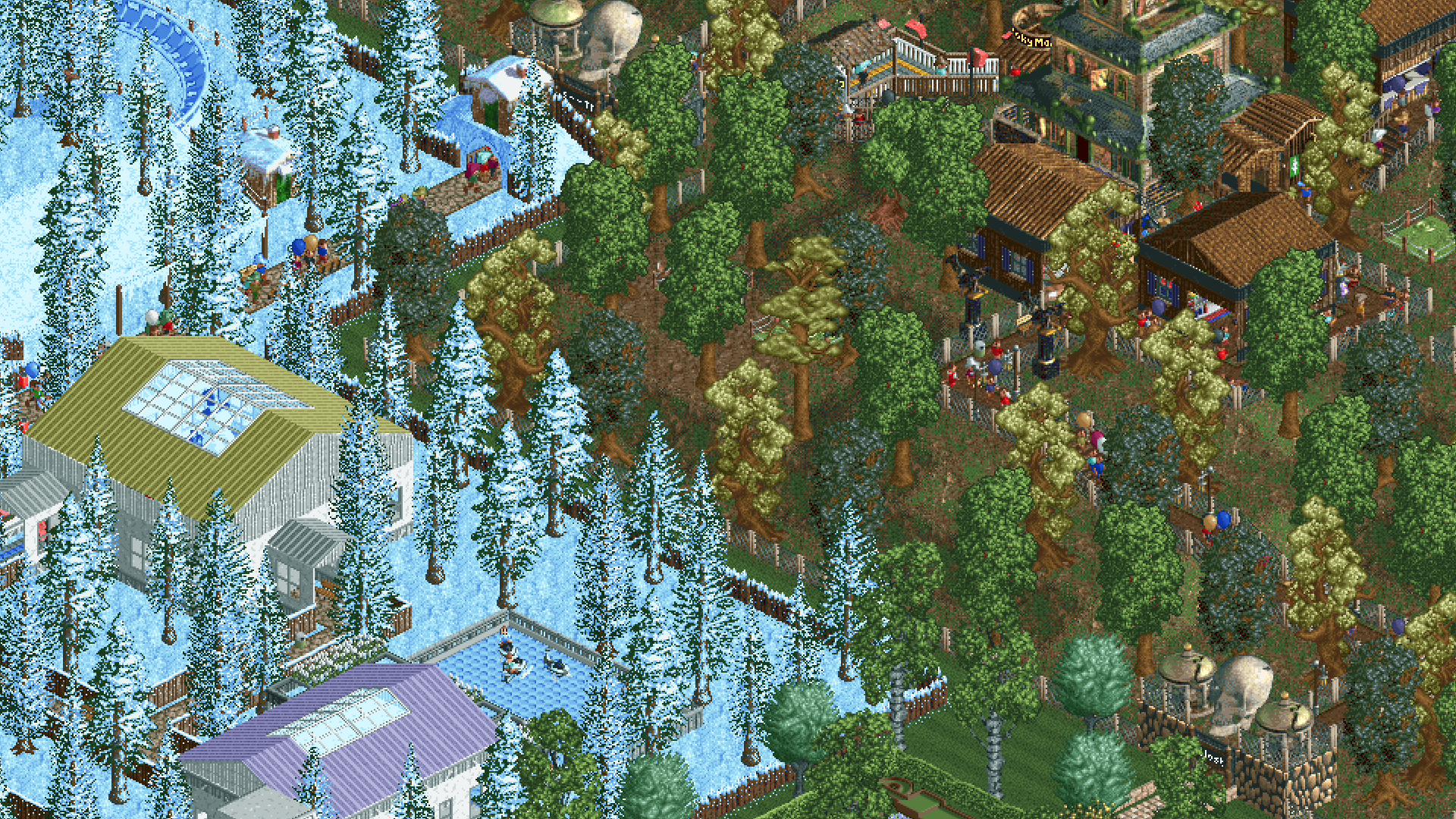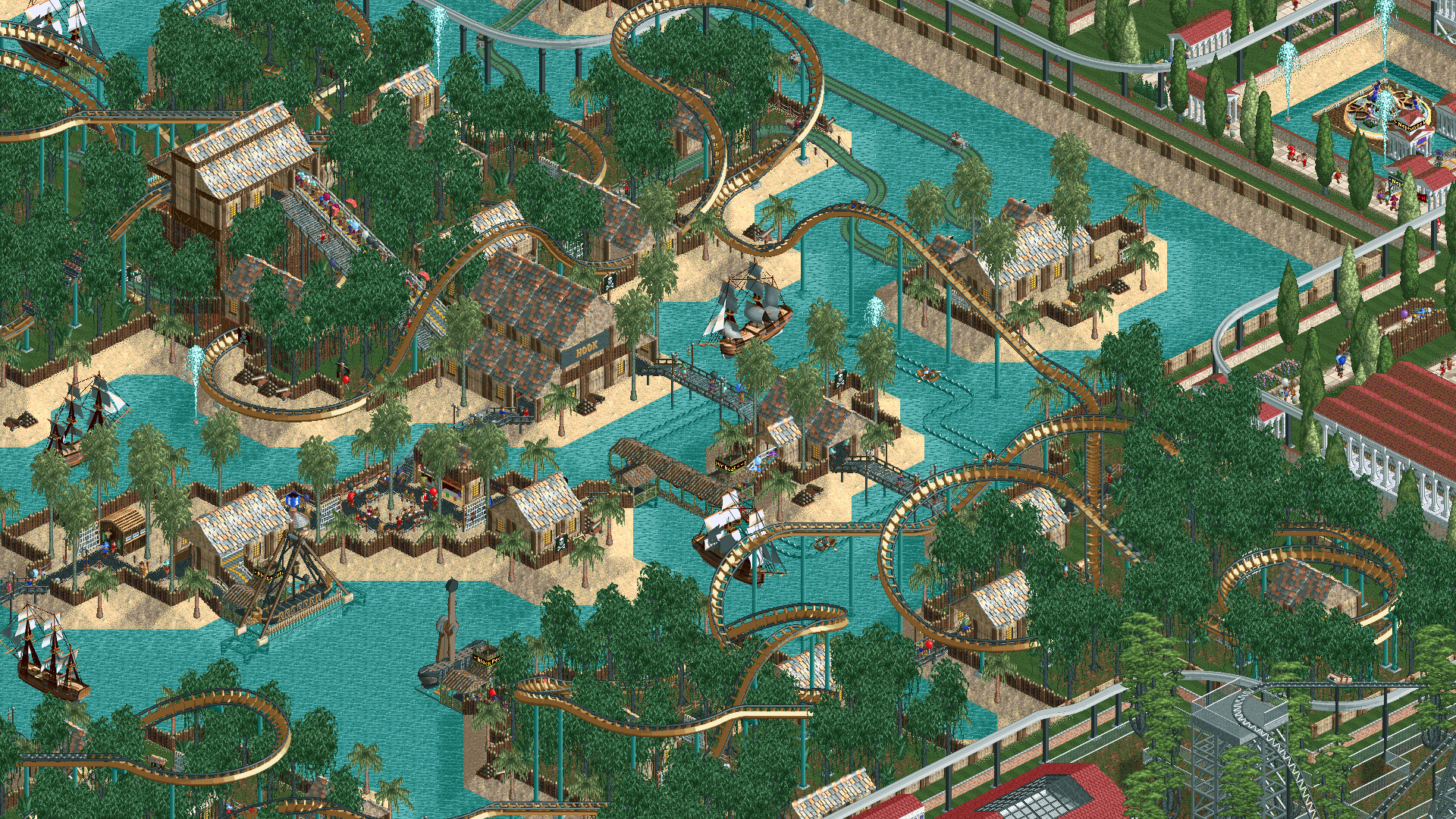After a decade of construction, this RollerCoaster Tycoon megapark is finally finished
An inside look at the creation of the ultimate theme park: 64,516 tiles placed by hand.

Without careful planning, a typical RollerCoaster Tycoon map can fill up in just a couple hours of building. The end result won't be pretty: rides are slapped down where they can fit and the path layout can pass as its own maze attraction. There is Egyptian scenery surrounding the haunted house. A handyman is out mowing an empty field. The moment that winning message pops up for completing the park’s objective, this haphazardly formed park is left behind and forgotten. Such is not the case for Sebastian Brendgen. After 10 years of meticulous building, the park of his dreams is finally complete.
Many of the roller coasters in his park were either based or named on existing ones he already experienced living in Germany.
“At first I liked the gameplay very much,” says Brendgen as he reminisced on playing RollerCoaster Tycoon 2 for the first time. “Later on, I don't think it was a game anymore to me. It was more like a picture or an art.” After completing every scenario and objective in the game, Brendgen took on the ultimate challenge: completely filling an entire map. This was no small task.
As the park began to grow, sections began to take form as themed areas. Soon each section was a distinct location that gave organization to this giant undertaking. The Middle Ages area has a log flume weaving between an ancient forest and a roller coaster that loops through castles. In the Mars section, guests are treated to a rocky and red terrain, along with a completely indoor coaster. There's an icy mountaintop zone, an area based on Tron, and even part of the map dedicated to a pristine parking lot. “My favorite is definitely the pirate area,” says Brendgen. “It turned out so well with the giant coaster that just barely tops the trees and jumps from one island to another.”

A decade is an immense amount of time to spend on any project, let alone a single game map. Creative ideas take time to form. “When I had a brilliant idea for a zone, I played every day for a week or even a month until it was finished,” explained Brendgen. “Most of the time I didn't know what to improve so I just logged into the park and watched all the rides and peeps until I got another idea.” As anyone familiar with the RollerCoaster Tycoon engine knows, just about every tile has to be placed individually. Imagine this on a 254x254 grid.
Rebuilding a zone was a common practice. Ideas come and go, and that meant that certain areas and even entire sections got the boot. Brendgen said that the entrance to his grand park went through four revisions before he ultimately settled for a more generic style. The previous iterations of the entrance did not fit the theme of a giant park.
Building the park wasn’t without its own set of limitations. “The lack of scenery was a problem at first,” said Brendgen. “I had no way of switching out scenery that I don't need for some that I want to use.” Aesthetics weren’t the only problem. Guests can do more than just empty their wallets and helplessly drown, specifically when it comes to the park rating. “They could not find the exit at all which dragged down my park rating. I picked the peeps up and dropped them near the exit to deal with the problem.” Since this park was being built using a scenario that gives unlimited cash but relied on a park rating, this snag was not one Brendgen could avoid. A limit of 255 total attractions and shops also had to be kept in mind.

One of the biggest breakthroughs in the park’s development life came within the last few years when OpenRCT2 was released. This fan-made tool allowed creators to further customize their parks by raising and removing certain limits, adding new hacks, and improving building controls. Brendgen acknowledged how much the tool helped the project. “It revived my enthusiasm to finish the park, because it brought many features that I really needed,” he said. This resurgence in desire helped fix that pesky scenery restriction while also adding custom scenery that helped bring more variety to the zones.
Keep up to date with the most important stories and the best deals, as picked by the PC Gamer team.
“I was always a big fan of theme parks,” says Brendgen. Many of the roller coasters in his park were either based or named on existing ones he already experienced living in Germany, including Blue Fire, Space Center, and Colorado Adventure. “It was one of the best days for me as a kid when my family and me were going to the Phantasialand near Cologne.”
By the end, Brendgen and his park featured 255 attractions and shops, 34 of which were roller coasters. An average of 8,000 guests were enjoying the park when the final touches were made, while the guest count totaled at 471,497. Prime Park Jet, the monorail that runs through most of the different themed areas of the park, has seen over one million tickets sold.

Reflecting on a Reddit post he submitted about the park that exploded in popularity, Brendgen explained that he “just wanted say goodbye to it. It took me so long and I wasted so many thoughts on it. But I'm really proud of myself that I stuck to it and brought it that far."
“Of course I would,” Brendgen answered when asked if he would visit his own park. “I honestly don't know which one I would ride first. Every peep that gets into the park runs straight to ‘Ultimate,’ the floorless duelling coaster in Tron. But I think I would chill out at the pirate area first. I mean, many of the peeps are over a hundred years in the park. With that time to spare it would not matter where to start.”

